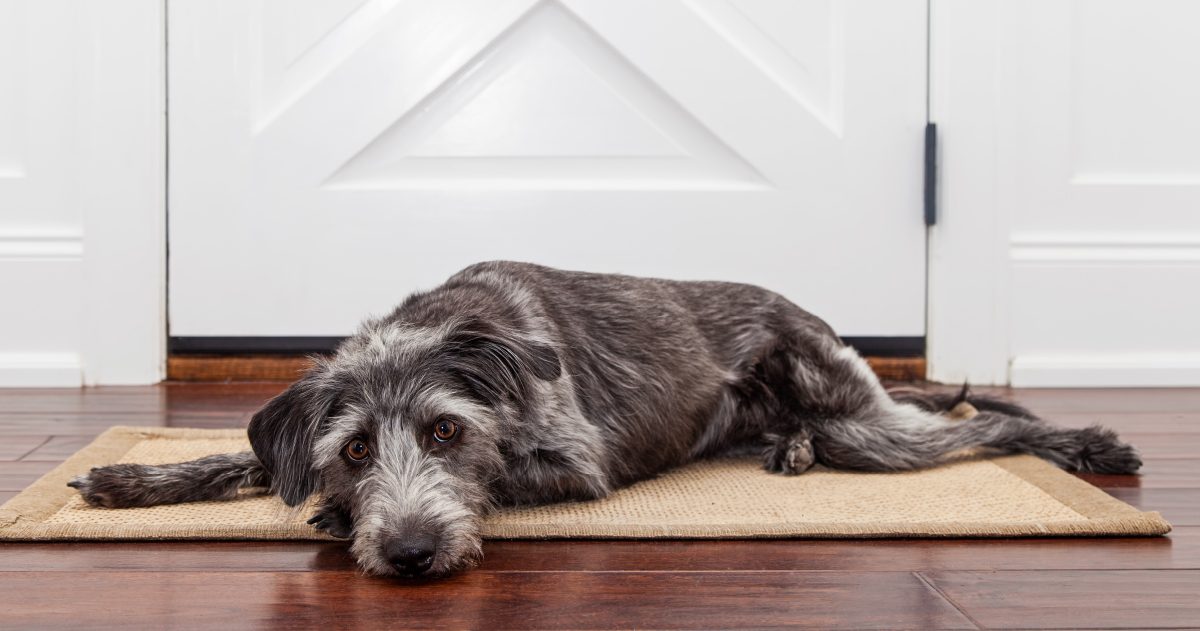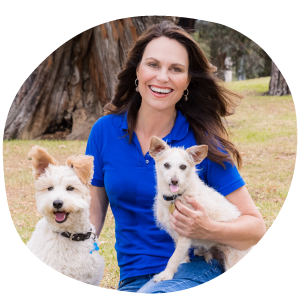Independence Training

by Lara Shannon
Independence and separation anxiety training for your dog
With the COVID-19 restrictions seeing many families spending more time with their pets over the past few months, many pets have no doubt enjoyed having their humans around more than usual.
For many dogs this has meant regular and daily walks, more family and play time and, for those that might usually feel a little anxious or bored when left alone during the day, it has provided them with the security, comfort and entertainment that they crave.
It has also seen many people decide to foster or adopt a new pet, or prompted the decision to buy a new puppy.
While all of this is a good thing, as the restrictions start to lift and more people return to work and kids go back to school, our pets, dogs in particular, are likely to feel the void of no longer having their days filled with the company of their family and daily exercise more than they may have ever felt before.

That’s why it is so important to start conditioning your dog to be used to spending some alone time again before life goes back to normal, as well as taking measures to keep up the daily exercise and provide them with some extra mental and physical stimulation when left alone.
This is even more critical for dogs that already experience some degrees of separation anxiety, which can be likened to panic attacks we humans may experience, causing them to engage in behaviours that can be destructive and self-harming when left alone.
That’s why independence training is really important at all stages of a dog’s life to build their confidence and comfort in being left alone. Here’s my top tips to help.
1. Provide them with their own safe and secure ‘place’ to spend time alone
Firstly ensure your dog has their own special place where they feel safe and secure, where only good things happen. Crate training your dog is great for this, or having their own place in the house with their bed and favourite toys.
Even if you are at home all day, create frequent separations from your dog. For most dogs, 3-5 times alone per day can be enough to help keep separation anxiety at bay.
Use positive reinforcement behaviour training to put it on cue such as “Go to your crate,” or “Go to your place” and send them there with a treat, toy or long lasting chew.
2. Have indoor dogs spend some time alone outdoors too
It is also good idea to have your dog spend time out in the front or back yard by themselves as well. Providing them with an interactive toy to play with, or an appropriately sized raw meaty bone can help keep them occupied while spending time outdoors.
3. Keep your arrivals and departures calm
After every separation, walk inside and ignore any excited jumping, barking or other attention seeking behaviour. This means no eye or hand contact or not speaking to them. Give them absolutely no attention when they are carrying on excitedly.
As soon as your dog has all four legs on the ground, or when they have stopped any other attention seeking behaviour, then greet them as warmly and playfully as you like so they soon learn that it is when they are calm and well behaved that they get your attention, pat or praise. Likewise, leave your dog without any elaborate goodbye ritual.

4. Get your dog’s brain and body moving & feeling good with scent work
Nose work and scenting games that tap into your dog’s natural hunting instincts are a great way to help keep both boredom and anxiety at bay.
Try hiding your dog’s treats or kibble around the yard or lounge so they can spend some time on their own foraging for their food. If you put this on cue such as ‘find your treats’ you can also use that when you are departing the house to help create a positive association with your departure.
Leaving them with a couple of treat-release and food puzzle toys are also a good way to keep their brains and bodies moving when they are alone. Make sure you rotate their toys regularly too to keep it interesting.
5. Desensitise your dog to your departure
Dogs are watching our every move from the moment we wake up, so can work themselves up into quite an anxious state before you have even left the house if you always have the same routine when you head off to work
There’s a couple of ways to do this which includes changing the order of your departure routine constantly, as well as normalising some of your departure sounds and movements by rattling your keys and grabbing your bag, but not actually leaving the house so they are not associated with you leaving every time.
6. Keep up their exercise and family play time
It’s also important that your dog is getting the exercise that they require once you and the family head back to work and school. This is at LEAST a 30 minute walk a day, but active dog breeds are likely to require much more and ideally one before and after work, as well as plenty of family ‘play’ time. A tired dog gets into less physical and mental mischief when left alone.
7. Obedience training / setting boundaries
If you have a puppy, encourage independence straight away don’t respond to every whimper by giving them what they want. Set the boundaries and their expectations early with obedience training, clear and consistent messages that encourages them to play and spend time alone, as well as getting your attention when ‘you’ want and not every time ‘they’ want it.
You can do this by setting some boundaries regarding access to you and places around the home and have everyone in the family be consistent with this. Obedience train your dog to only jump up on the couch, come into the kitchen, be on the bed etc. when you invite them to.
8. Seek professional help
If your dog’s separation anxiety is getting worse, or is already severe, then do seek out professional help from a trainer and/or a Vet Behaviourist, as it won’t go away over time, it usually gets worse if left untreated. And, of course, never punish your dog for being anxious or too clingy.
You can also visit PoochesAtPlay.com for more tips to help on many of the topics and suggestions above.

About the Author – Lara Shannon
A certified dog behaviourist and trainer, Lara is the Executive Producer and Host of Pooches at Play on Channel 10 and editor of https://poochesatplay.com
As a passionate animal welfare advocate, Lara has been the spokesperson for organisations including the World Wide Fund for Nature, Planet Ark, Keep Australia Beautiful and is the Ambassador for Second Chance Animal Rescue.
Lara has been a regular on Australian TV screens and radio for over 20 years and in between her TV show and dog training commitments, Lara is still regularly featured in the media and can also be seen presenting on stage at pet expos, seminars and events throughout the year with her cheeky rescue dog ‘Dynamite Darcy’ by her side.
Lara’s a published author, you can view and purchase her books 'Eat, Play, Love Your Dog' and 'World of Dogs' here.
